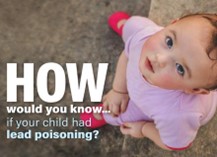Initial finger-prick or heel-prick testing is available at the Clark County Combined Health District for children and adults.

CCCHD testing is quick and reliable, the appointments only take 20 minutes! A parent or guardian must be present for consent for a child’s test which is free for Medicaid recipients. Many private insurance policies also cover the $20 capillary test cost. However, no one will be turned away for an inability to pay.
If the CCCHD capillary test result is 3.5 μg/dL or higher, CCCHD’s lead case manager will provide an order for the child or adult to have their venous draw through Nationwide Children’s ChildLab located at 1644 N Limestone St.
If transportation is an issue, the lead case manager can assist with other arrangements. Insurance is billed by ChildLab for the service. Please let the lab know you have no insurance coverage and will be paying cash to qualify for a reduced cost.
CCCHD lead testing is available weekdays by appointment only. To schedule a CCCHD lead test call us 937-390-5600 and ask for Randi at extension 266.
Lead testing is also recommended for pregnant women living in a high-risk zip code area and for pregnant women with a history of lead poisoning as lead can be transferred from mother to unborn baby. For more information about pregnancy and lead safety, click here.
Click here to learn more about the Center for Disease Control and Prevention’s recommendations regarding elevated blood lead levels.